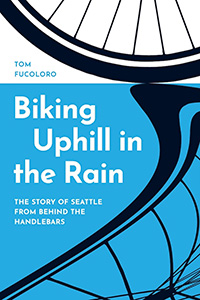
Katie Wilson of the Transit Riders Union has penned a two–part op-ed for Crosscut, and of course they are both must-reads.
Seattle’s climate emissions are increasing. And transportation is our biggest offender. We need a lot more people to drive a lot less. And we don’t have a lot of time to change course. So how are we going to do this?
For regular readers of this blog, few of her suggested solutions will be a surprise. But unfortunately, not everyone is a regular reader of this blog (hard to believe, I know, but it’s true). Wilson does a good job simplifying a set of complex and intertwined issues into ideas Mayor Jenny Durkan and the city has the power to improve.
The mayor can prioritize walking, biking, transit and accessibility, even in the face of opposition.
“After a century of auto dominance, most of us don’t even notice how much of our public space has been appropriated for cars, or how deeply driving is subsidized and written into our laws,” she writes. “There’s no way to revoke this planet-destroying privilege without making some people angry. The mayor needs to stand firm in defense of projects that shift us toward a sustainable future, even when it’s hard.”
We can dramatically expand bus service though a Seattle Transportation Benefits District renewal in 2020. Preferably, the County would also pass a big TBD to fund needed regional bus transit.
We can also expand the Commute Trip Reduction program to look beyond just rush hour.
“Currently, an employer falls under the Commute Trip Reduction requirements if at least 100 full-time employees arrive at a single worksite between 6 and 9 a.m,” she writes. “As it turns out, cars emit greenhouse gases at all hours of the day and night, and 100 workers’ travel choices matter whether they end up at one worksite or several. If we care about climate change, not just gridlock, these criteria could use an update.”
And, of course, we could build “massive amounts of affordable housing near transit.” There are two basic ways to increase the number of households near quality transit service: Grow the reach and frequency of transit service, or grow the number of homes near existing transit (same goes for bike routes, by the way). And of course we should do both, and we’ll improve our city’s housing crisis while we’re at it.












Comments
One response to “TRU’s Wilson: Four steps ‘to spark Seattle’s transportation revolution’”
Too bad Durkan doesn’t stand for anything except self promotion.